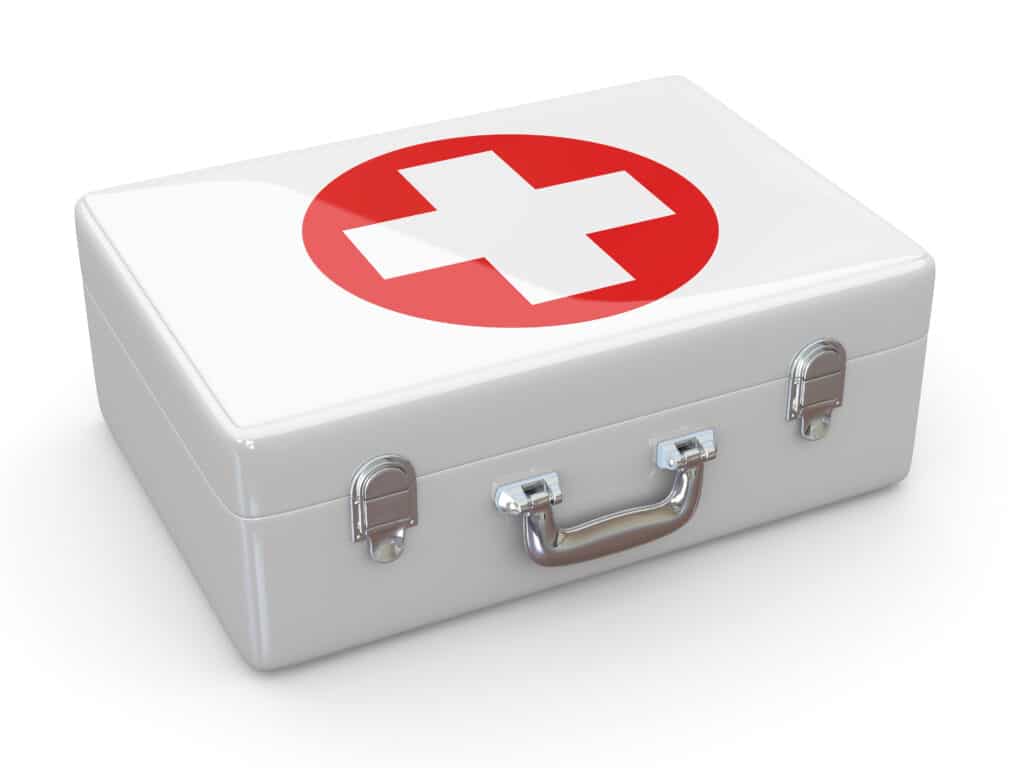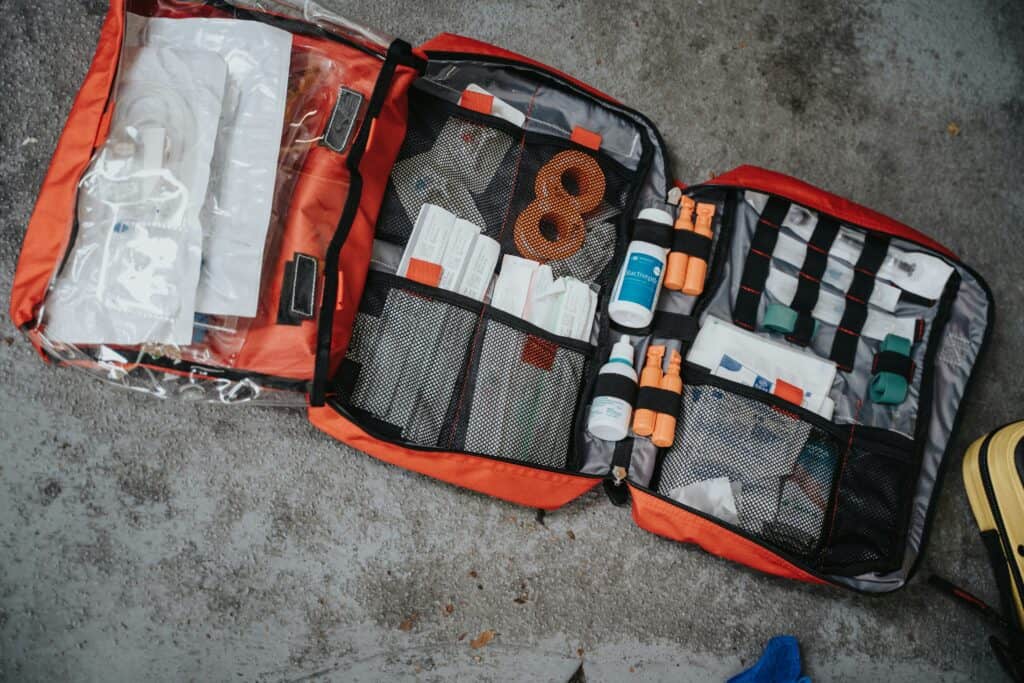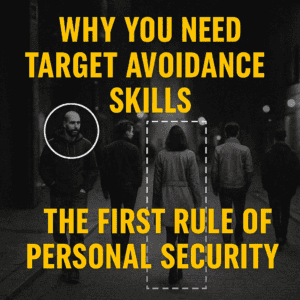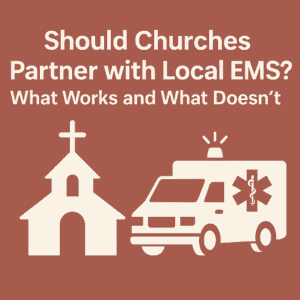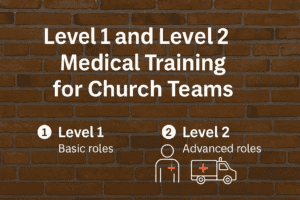When it comes to medical emergencies, churches are not exempt from the possibility of an incident occurring.
Whether it’s a member of the congregation or a visitor, having the proper medical equipment on hand can mean the difference between life and death.
While churches are not required by law (in most places) to have medical equipment, it is highly recommended that they invest in certain items to ensure the safety and well-being of those in attendance.
One piece of equipment that churches should consider investing in is an Automated External Defibrillator (AED). An AED is a portable device that can be used to shock the heart and establish heart rhythm during a cardiac episode.
The American Heart Association (AHA) recommends that AEDs be available in public and private places where large numbers of people gather, making it a valuable addition to any church.
Additionally, churches should maintain defibrillators and place them in easy-to-reach locations.
In addition to an AED, churches should also consider having a basic first-aid kit on hand.
This can include items such as bandages, antiseptic wipes, and gauze.
While a first-aid kit may not be able to handle all medical emergencies, it can be a valuable resource for minor injuries and can help prevent them from becoming major ones.
Finally, consideration should be given to acquiring well-stocked trauma kits.
A well-stocked trauma kit allows you to address life-threatening situations such as severe injuries, gunshot wounds, and car accidents.
It is important to note that a trauma kit is different from a first aid kit, which is intended for minor injuries such as cuts, scrapes, and burns.
By having the proper medical equipment on hand, churches can help ensure the safety and well-being of their congregation and visitors.
Understanding the Importance of Medical Equipment in Churches
Medical emergencies can happen anytime, anywhere, and to anyone, including those attending a church service or event.
Churches have a responsibility to ensure the safety and well-being of their congregants and visitors.
One way they can do this is by having the appropriate medical equipment on hand.
In the event of an emergency, having the right equipment can make all the difference.
It can mean the difference between life and death.
Churches should have a well-stocked first aid kit on hand, which should be easily accessible to adults but out of reach of children.
First aid kits can be purchased pre-made or assembled in-house.
Regardless of which option is chosen, it is important to check the kit regularly to ensure it is well-stocked.
In addition to first aid kits, churches should consider having an automated external defibrillator (AED) on hand.
AEDs are used to help save lives in the event of sudden cardiac arrest.
While churches are not required to have an AED, it is always a good idea to have one on hand in case someone needs immediate medical assistance.
Additionally, churches should also consider acquiring well-stocked trauma kits.
Trauma kits are essential in addressing life-threatening situations such as severe injuries, gunshot wounds, and car accidents.
Having a trauma kit on hand can mean the difference between life and death in emergency situations.
Churches should ensure that their trauma kit is well-stocked and easily accessible to trained personnel.
By having the appropriate medical equipment on hand, churches can ensure the safety and well-being of their congregants and visitors in the event of a medical emergency.
Another important piece of medical equipment that churches should consider having is an emergency medical response team (EMRT).
An EMRT can provide assistance prior to the arrival of emergency responders and can provide first aid and assistance in the event of minor accidents or illnesses.
Churches should make sure their EMRT is properly trained and equipped to handle medical emergencies.
In conclusion, having the appropriate medical equipment on hand is essential for ensuring the safety and well-being of church congregants and visitors.
Churches should consider having a well-stocked first aid kit, AED, trauma kit, and an EMRT on hand.
By taking these steps, churches can help ensure that they are prepared to handle medical emergencies and can help save lives in the event of an emergency.
Essential Medical Equipment for Churches
When it comes to medical emergencies, churches need to be prepared with the right equipment to ensure the safety of their members and attendees.
Here are the essential medical equipment that every church should have:
Automated External Defibrillators (AEDs)
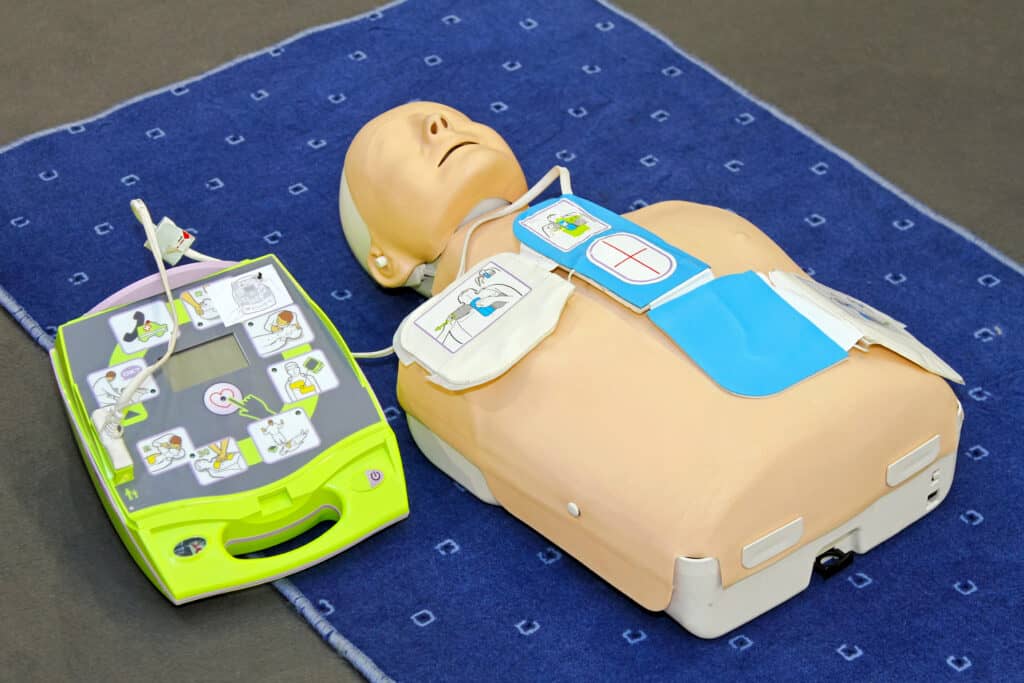
Automated External Defibrillators (AEDs) are essential life-saving devices that can help restore a normal heart rhythm in the event of sudden cardiac arrest.
AEDs are easy to use and can be operated by anyone with basic training.
They are designed to deliver an electric shock to the heart to help restore its normal rhythm.
Churches should have at least one AED on their premises, and it should be easily accessible in case of an emergency.
AEDs should be placed in a visible location, and church staff should be trained on how to use them in case of an emergency.
First Aid Kits
First aid kits are essential medical equipment that every church should have.
They can help provide immediate care for injuries and illnesses until medical professionals arrive.
First aid kits should be placed in visible locations around the church, and they should be easily accessible to adults but out of reach of children.
Churches can either buy pre-assembled first aid kits or assemble them themselves.
A typical first aid kit should include items such as bandages, gauze pads, antiseptic wipes, scissors, and tweezers.
Trauma Kits
In addition to first aid kits and AEDs, churches should also consider having a well-stocked trauma kit on hand.
Trauma kits are designed to provide immediate care for life-threatening injuries such as gunshot wounds, severe bleeding, and car accidents.
A typical trauma kit should include, at a minimum, items such as trauma scissors, Israeli-type trauma dressings (pressure dressings), hemostatic dressing, chest seals, and tourniquets.
It is important to ensure that the trauma kit is well-stocked and easily accessible to trained personnel.
Church staff members should be trained on how to use the contents of the trauma kit in case of an emergency.
By having a well-stocked trauma kit on hand, churches can help ensure that they are prepared to handle medical emergencies and can help save lives in the event of an emergency.
Life-Saving Devices
In addition to the above, there are other life-saving devices that churches should consider having on their premises.
For example, churches located near bodies of water should have life jackets and flotation devices available in case of an emergency.
Churches with outdoor areas should also consider having snake bite kits and insect sting kits available.
Overall, it is important for churches to be prepared for medical emergencies.
By having the right medical equipment on hand, churches can help ensure the safety of their members and attendees.
Training and Certification
Having the right medical equipment is important, but it is equally important to have trained personnel who can use the equipment effectively.
Churches should have a plan in place for training and certification of their staff and volunteers in CPR and first aid.
CPR Training
CPR (Cardiopulmonary resuscitation) is a life-saving technique that can be performed on a person who has suffered a cardiac arrest.
Churches should ensure that their staff and volunteers are trained in CPR and have the necessary certification.
The American Heart Association provides CPR training courses that are widely recognized and respected.
First Aid Certification
First aid certification is also important for churches.
Trained personnel can provide immediate assistance to someone who is injured or has fallen ill.
This can be particularly important in situations where emergency services may take some time to arrive.
Churches should ensure that their staff and volunteers are trained and certified in first aid.
This can include basic first aid skills such as wound care, splinting, and managing allergic reactions.
The American Red Cross offers first aid certification courses that are recognized nationwide.
In conclusion, having the right medical equipment is important, but it is equally important to have trained personnel who can use the equipment effectively.
Churches should have a plan in place for training and certification of their staff and volunteers in CPR and first aid.
This will help ensure that the church is prepared to handle medical emergencies when they arise.
Roles and Responsibilities
When it comes to medical emergencies in a church, it is essential to have a designated team of volunteers and insurance agents to handle the situation.
The following sub-sections will detail the roles and responsibilities of each group.
Volunteers
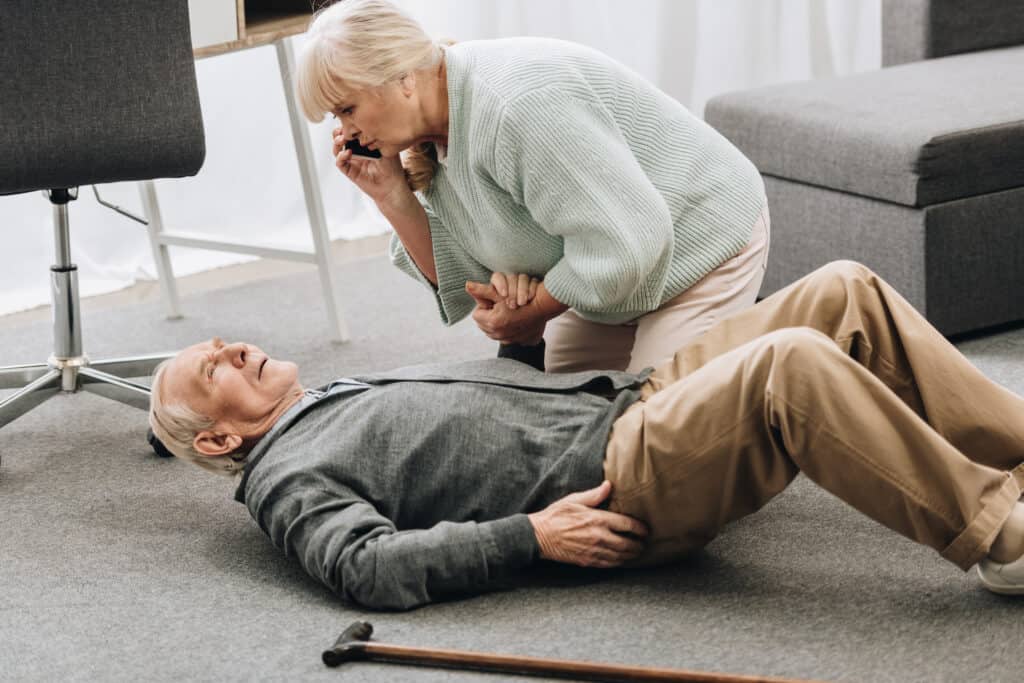
Volunteers play a crucial role in handling medical emergencies in a church.
They are often the first responders to an incident and can provide immediate assistance until professional help arrives.
It is important to have a designated team of volunteers who are trained in emergency medical procedures and have access to necessary medical equipment.
The volunteer team should be responsible for the following:
- Ensuring that first aid kits are well-stocked and accessible throughout the church premises.
- Checking the AED units regularly to ensure they are in working condition.
- Identifying and reporting any potential safety hazards in the church to the appropriate authorities.
- Providing immediate medical assistance to anyone in need during a church service or event.
Insurance Agents
Insurance agents can play a critical role in helping churches prepare for medical emergencies.
Insurance agents can also provide recommendations on how to address certain medical emergencies and help ensure you have the appropriate insurance coverage to protect against potential liabilities.
Having a well-trained team of volunteers and insurance agents is essential for handling medical emergencies in a church.
By working together, they can ensure that the church is well-prepared to respond to any emergency situation that may arise.
Choosing the Right Equipment
When it comes to choosing the right medical equipment for a church, there are a few key items that should be considered.
The most important pieces of equipment are AED packages, trauma kits, and first aid kits.
AED Packages
An AED (Automated External Defibrillator) is a portable device that can be used to treat sudden cardiac arrest in an emergency situation.
AED packages typically include the AED device, electrodes, batteries, and a carrying case.
When selecting an AED package for a church, it is important to consider the following factors:
- Ease of use: AEDs should be easy to use, even for those without medical training. Look for models with clear instructions and voice prompts.
- Durability: AEDs should be able to withstand regular use and be resistant to damage from drops, water, and dust.
- Maintenance: AEDs should be regularly maintained and serviced to ensure they are always in working order.
First Aid Kits
First aid kits are essential for treating minor injuries and illnesses that may occur during church activities.
A well-stocked first aid kit should include items such as bandages, gauze, antiseptic wipes, and pain relievers.
When selecting a first aid kit for a church, it is important to consider the following factors:
- Size: The size of the first aid kit should be appropriate for the size of the church and the number of people who will be using it.
- Contents: The first aid kit should contain a variety of items to treat a range of injuries and illnesses.
- Accessibility: The first aid kit should be easily accessible and located in a visible and central location.
Trauma Kits
In addition to AED packages and first aid kits, churches should also consider having a well-stocked trauma kit on hand.
Trauma kits are designed to provide immediate care for life-threatening injuries such as gunshot wounds, severe bleeding, and car accidents.
When selecting a trauma kit for a church, it is important to consider the following factors:
- Contents: The trauma kit should contain items that are appropriate for the types of injuries that are most likely to occur in the church setting.
- Training: Church staff members should be trained on how to use the contents of the trauma kit in case of an emergency.
- Accessibility: The trauma kit should be easily accessible and located in a visible and central location.
By carefully selecting the right AED package, trauma kit, and first aid kit, a church can ensure that they are prepared to handle medical emergencies and provide necessary care to their congregation.
Proper Storage and Maintenance
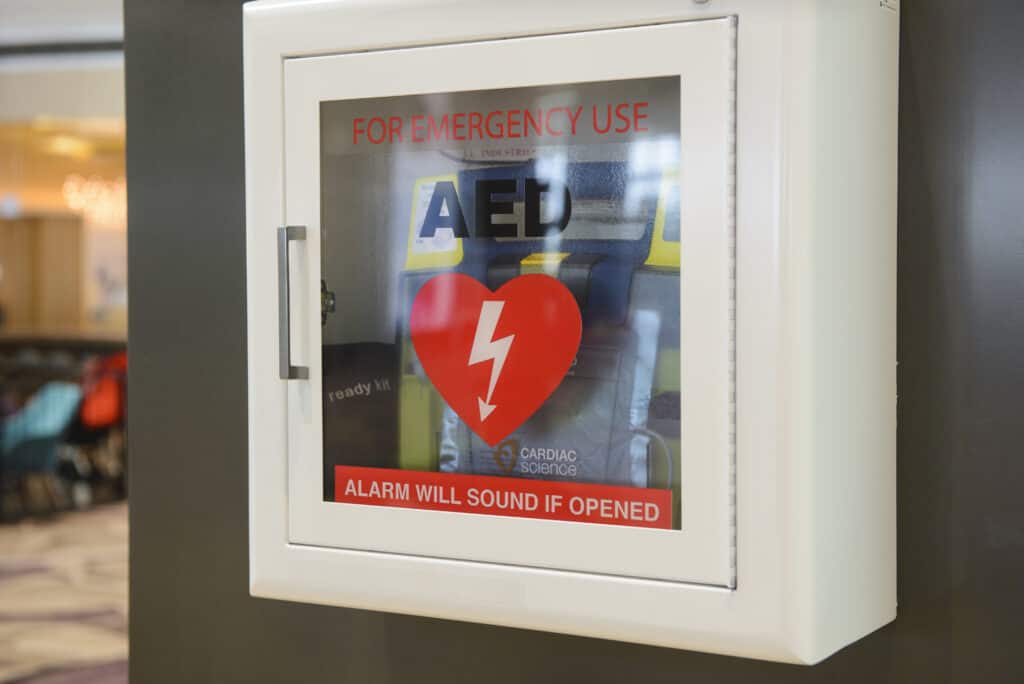
Proper storage and maintenance of medical equipment is essential to ensure it remains in good working condition and is readily available when needed.
Churches should consider investing in cabinets or storage rooms specifically designated for medical equipment to keep it organized and easily accessible.
Individuals who have access to storage areas should have proper knowledge of their contents, so no equipment or medicine is misused or misplaced.
Access control devices such as biometric readers, key cards, or swipe cards can help keep track of individuals coming and going from storage areas.
Regular maintenance of medical equipment is also crucial to ensure it remains in good working order.
Churches should establish a maintenance schedule for their medical equipment and ensure it is adhered to.
This schedule should include routine checks to ensure all equipment is functioning correctly and any necessary repairs or replacements are made promptly.
It is also important to keep medical equipment clean and sanitized to prevent the spread of germs.
Churches should establish cleaning protocols and ensure all individuals who handle medical equipment are trained on proper cleaning and sanitizing techniques.
Churches should maintain defibrillators and place them in easy-to-reach locations.
By taking proper care of medical equipment and investing in additional equipment when necessary, churches can ensure they are prepared to handle medical incidents and provide a safe environment for their congregation.
Legislation and Guidelines
Churches that provide medical services must follow state regulations and patient safety guidelines.
In California, for example, medical clinics operated by religious organizations are subject to the same regulations as those operated by other entities.
These regulations cover everything from the qualifications of staff to the types of medical equipment that must be on hand.
The American Heart Association recommends that AEDs be available in public and/or private places where large numbers of people gather.
While churches are not required by law to have an AED, it is a good idea to invest in one of these life-saving devices.
In addition to AEDs, churches must also ensure that they have appropriate first-aid and trauma supplies on hand.
At least one employee should have first aid certification if a medical center is not close to the church.
Churches must also ensure that their buildings are safe and accessible.
All walking surfaces like hallways, passageways, and stairwells must be kept clean, unblocked, and orderly.
OSHA requires that all stairways have handrails and that storage rooms stay neat, clean, and dry.
It is important for churches to stay up-to-date with the latest regulations and guidelines related to medical services.
This can help ensure that they are providing safe and effective care to their community.
Outreach and Community Involvement
Churches play an essential role in their communities by providing spiritual guidance, support, and outreach services.
Medical emergencies can happen anywhere, and churches are not immune to them.
Therefore, it is essential for churches to have medical equipment that can help save lives in case of an emergency.
Apart from providing medical equipment, churches can also engage in community outreach programs to promote health and well-being.
The following are some outreach and community involvement ideas that churches can consider:
- Summer Camps: Summer camps are an excellent way for churches to engage with children and young adults in their communities. Churches can organize summer camps that focus on health and wellness, including healthy eating habits, exercise, and mental health awareness.
- Public Places: Churches can also provide medical equipment in public places such as parks, community centers, and schools. Providing Automated External Defibrillators (AEDs) in public places can help save lives in case of a cardiac emergency.
- Outreach Ministries: Churches can organize outreach ministries that focus on health and wellness. For example, churches can organize health fairs that provide free health screenings, health education, and referrals to health care providers.
- Seminars: Churches can host seminars that focus on health and wellness topics such as mental health, healthy eating habits, and exercise. Seminars can be open to the public and can be an excellent way for churches to engage with their communities.
In conclusion, churches can play an essential role in promoting health and wellness in their communities.
Providing medical equipment and engaging in community outreach programs can help churches make a positive impact on the health and well-being of their communities.
Conclusion
In conclusion, churches should consider investing in medical equipment to ensure the safety and well-being of their members.
Churches should also have several members trained in CPR, First Aid, and AED use.
These individuals should have a cell phone with them at all times when on church premises and have access to a defibrillator.
Overall, having the necessary medical equipment and trained individuals can greatly improve emergency response times and increase the chances of survival in the event of a medical emergency.
By taking these steps, churches can help ensure the safety and well-being of their members and the community at large.

